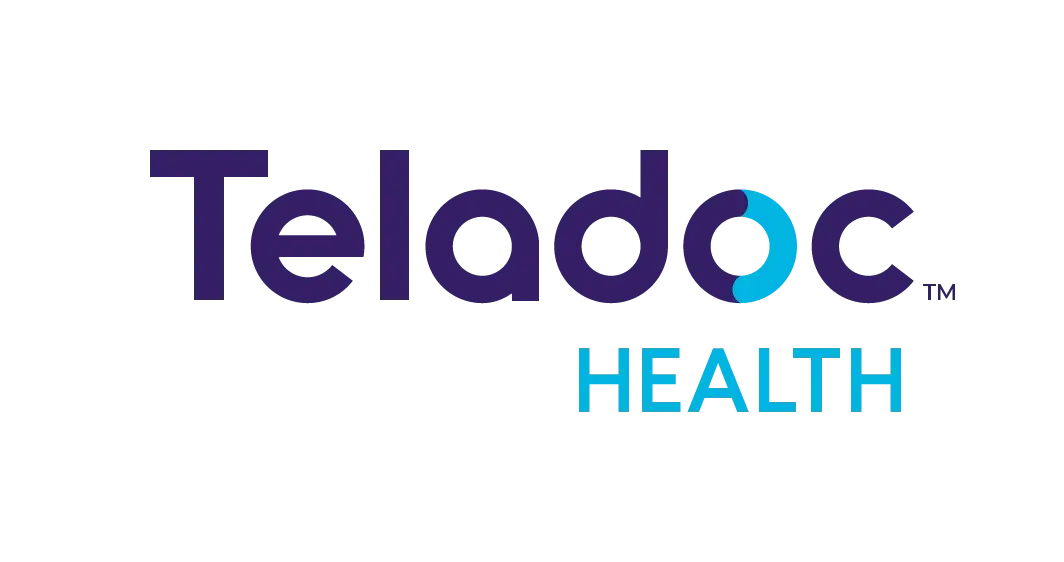Ready to build your own Founder-Led Growth engine? Book a Strategy Call
Frontlines.io | Where B2B Founders Talk GTM.
Strategic Communications Advisory For Visionary Founders
Actionable
Takeaways
Target customers facing existential financial pressure, not optimal market conditions:
Shadowbox entered through lab diagnostics—a commoditized, low-margin segment hemorrhaging money where providers faced $5K-$50K integration costs per connection taking 3-6 months. Greg acknowledged labs are "the redheaded stepchild of healthcare" but their desperation made them willing to pilot unproven technology. The lesson: segments with severe unit economics problems become early adopter pools because status quo costs exceed perceived risk of new vendors.
Build a partnerships function before you have market leverage:
Shadowbox hired a partnerships-focused employee early to cultivate relationships with RCM vendors and lab information system providers already selling to target customers. Rather than waiting for customer traction to attract partners, they used partnerships to generate initial traction. Greg emphasized healthcare adoption requires credible references—partnerships provide instant credibility entrepreneurs can't buy. Map your ecosystem's existing vendor relationships and pursue co-sell arrangements before achieving meaningful ARR.
Use early customer feedback to migrate upmarket, not pivot laterally:
Shadowbox started with labs, expanded to imaging centers, but their true ICP emerged as health systems with 500-1,000 community providers on disparate EHRs where traditional integration economics break down. Greg noted: "health systems that have major outreach programs where it doesn't pencil out to have them on their EPIC system." The migration path moved from small, desperate customers toward larger organizations facing the same core problem at scale. Don't mistake initial ICP for ultimate ICP—use early segments as beachheads to validate technology before pursuing customers with better economics.
Partner with horizontal competitors when you solve orthogonal use cases:
The HC1 deal splits the interoperability market—structured, predictable integrations go to HC1's traditional approach while rapid deployments to fragmented provider networks go to Shadowbox. This isn't channel partnership but market segmentation by use case economics. Greg explained they bring "something complementary to and in some ways competitive" but combined create offerings competitors can't match. Evaluate whether your "competitors" actually serve different jobs-to-be-done within the same category, then structure partnerships around use case delineation rather than territorial splits.
Leverage policy expertise as product moat in regulated markets:
Greg's Capitol Hill background enabled Shadowbox to support the Coalition for Innovative Lab Testing's successful lawsuit blocking FDA regulation of lab-developed tests—directly protecting their customers' business models. This wasn't marketing but strategic positioning that demonstrates commitment beyond vendor relationships. In heavily regulated industries, founders with policy expertise or advisors who can shape regulatory outcomes create defensibility that pure technology cannot. Consider how industry advocacy amplifies customer loyalty while potentially expanding TAM through favorable regulatory changes.
Conversation
Highlights
How Shadowbox Turned Healthcare’s Least Profitable Segment Into a $950B Market Entry Point
Healthcare providers waste nearly $1 trillion annually on manual processes—not $300 billion as commonly cited, but $950 billion according to testimony before the U.S. Senate. The problem isn’t workflow inefficiency. It’s infrastructure economics: accessing siloed EHR data costs $5,000 to $50,000 per integration and takes three to six months to implement.
In our recent episode of Category Visionaries, Gregory Stein, CEO of Shadowbox, explained how his company built patented browser technology that accesses the document object model and API endpoints within EHR systems, enabling integration in five minutes rather than months. But the more instructive story is how they went to market in a system designed to resist exactly what they’re selling.
Targeting Financial Desperation Instead of Buying Power
In 2017, Shadowbox had validated technology and multiple potential segments to pursue. Gregory chose laboratory diagnostics—the segment every other vendor avoids.
“The lab industry is like the most volatile,” Gregory explains. “They go in and out of business, they have terrible margin. It’s sort of the, you know, to use a pejorative term, the redheaded stepchild, if you will, of the healthcare system. Nobody likes lab. They’re always first one to go.”
The calculation was deliberate. Labs couldn’t afford $5,000-$50,000 integrations with 3-6 month timelines. Their unit economics were so broken that maintaining the status quo threatened their survival. Gregory recognized that “because labs are under such financial duress and such challenge from insurance companies, they were willing to take a flyer on an unproven technology with an unproven leader.”
This inverts conventional market entry logic. Standard wisdom says target segments with healthy margins and established budgets. Shadowbox targeted customers where the pain of doing nothing exceeded the perceived risk of adopting unproven technology from an unknown vendor.
The lesson isn’t “target unprofitable segments.” It’s understanding when dire unit economics create adoption windows that don’t exist in healthier markets. The key variable is whether your solution addresses the specific financial constraint causing the desperation.
First-Touch Product Validation
Shadowbox launched their first customer in 2018. When the medical assistant responsible for ordering tests hit the button labeled “order now,” the form auto-populated with patient data extracted from the EHR through Shadowbox’s browser.
“Her face just lit up and she said, this is going to save me so much time,” Gregory recalls. “Because otherwise I’m filling out either on paper and if it’s wrong, then I’m getting phone calls from the lab and it’s just a huge hassle.”
That interaction validated more than technical functionality. It confirmed that value was immediately visible without explanation, the alternative was painful enough that adoption required no persuasion, and the improvement was dramatic enough to create instant advocacy.
Building Partnership Infrastructure Pre-Traction
Most startups pursue partnerships after establishing market presence. Shadowbox hired for partnerships as an early function—before they had leverage to offer potential partners.
The target: revenue cycle management vendors and lab information system providers already selling to Shadowbox’s ICP. These partners faced the same integration economics problem. When prospects couldn’t afford traditional integrations, partners could position Shadowbox as an alternative deployment path.
“Getting your foot in the door with a credible partner as a reference is probably the most important thing in healthcare,” Gregory emphasizes. “Healthcare is one of the slowest to adopt industries out there.”
The strategy created a distribution mechanism before Shadowbox had the brand recognition or customer base to generate meaningful inbound volume. Partners provided both customer access and category credibility simultaneously.
Using Unprofitable Segments as Technology Beachheads
Labs validated Shadowbox’s core technology and generated initial revenue. But Gregory recognized the ultimate ICP differed significantly: “The true ICP, I think, ultimately are health systems that have major outreach programs where they have hundreds if not thousands of community providers, where it doesn’t pencil out to have them on their EPIC system or their Oracle server system.”
This articulates the beachhead-to-expansion path clearly. Labs had the same core problem—fragmented EHR access—but lacked resources for traditional solutions. Health systems have the same problem at dramatically larger scale: 500 to 1,000 community providers on disparate EHR systems where traditional integration would cost millions and require years to implement.
Shadowbox moved from labs to imaging centers, progressively building toward health systems. Each segment provided validation for entering the next tier. The technology that worked for resource-constrained labs could handle enterprise-scale provider network complexity.
Market Segmentation Through Use Case Economics
In July, Shadowbox announced a partnership with HC1, a company approximately five to six times their size that serves roughly 20% of U.S. health systems. HC1 provides traditional interoperability through HL7 and API integrations—ostensibly competitive with Shadowbox’s approach.
The partnership functions because they solve orthogonal use case economics. “We’re able to split the market, if you will, in terms of use cases that rely or require an HL7 integration or API,” Gregory explains. “That goes to HC1, and then those that where that doesn’t pencil out, those go to Shadowbox.”
This isn’t channel partnership or geographic territory division. It’s market segmentation based on integration economics profiles. Structured, predictable integrations where the ROI of custom development pencils out go to HC1’s traditional approach. Rapid deployments to fragmented provider networks where traditional integration economics break down go to Shadowbox.
Combined, they address use cases neither could serve independently. “Other competitors of ours, if you will, in our marketplace can’t offer what we’re offering as a combined thing,” Gregory notes.
The partnership also solves the credibility problem. HC1’s existing health system relationships provide access and validation that Shadowbox couldn’t generate independently at their stage.
Regulatory Positioning as Competitive Moat
Gregory’s background as a congressional staffer on Capitol Hill became an unexpected source of competitive advantage. He’s engaged with members of Congress, relevant committees, and the administration regarding expansion of information blocking provisions in the 21st Century Cures Act.
More significantly, Shadowbox supported the Coalition for Innovative Lab Testing’s lawsuit that successfully blocked FDA regulation of lab-developed tests as medical devices.
“That shows that we aren’t in it just for our own technology, our own company, our own customer, our own revenue,” Gregory says. “We’re in it for the industry and we supported it.”
This creates customer loyalty that transcends typical vendor relationships. Shadowbox isn’t merely solving a technical integration problem—they’re protecting their customers’ business models at the regulatory level. In heavily regulated industries, policy expertise and advocacy create defensibility that technology alone cannot provide.
The principle extends beyond healthcare. In any regulated market, founders with policy fluency or advisors who can influence regulatory outcomes create moats that competitors focused purely on product cannot replicate.
Where They Stand
Today, Shadowbox processes thousands of transactions daily across thousands of users. Gregory estimates they’re at 25-30% technology maturity but only 0.5% market penetration.
The vision: “Shadowbox will become the enterprise browser of choice for healthcare, meaning every single desktop laptop has a Shadowbox on it.” At scale, any healthcare provider could instantly integrate with any vendor or service through the Shadowbox browser without custom integration work.
The path from desperate labs to enterprise healthcare browser required unconventional decisions at each inflection point. Target segments others systematically avoid. Build partnership infrastructure before you have negotiating leverage. Use early segments as technology beachheads rather than final destinations. Partner with competitors when you address different use case economics within the same category. Deploy policy expertise as competitive moat in regulated markets.
These strategies don’t appear in standard B2B playbooks because they’re predicated on specific market conditions: broken unit economics creating adoption windows, slow-moving incumbents creating partnership opportunities, and regulatory complexity creating defensibility beyond product. But for founders facing similar constraints, Shadowbox’s path demonstrates how the segments and strategies that appear least attractive often provide the fastest route to validating technology that can eventually capture significantly larger markets.












































































































































